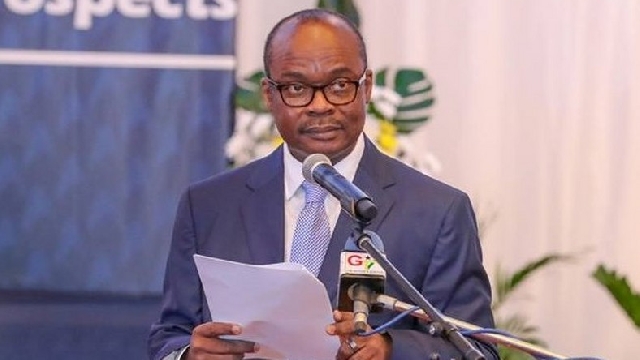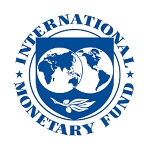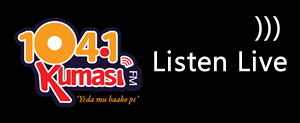BoG maintains policy rate at 13.5%
 BoG Governor
BoG Governor
The Bank of Ghana’s Monetary Policy Committee (MPC) has maintained the policy rate at 13.5 percent.
The Committee said this is because its assessment showed that the risks to inflation and growth were broadly balanced.
The committee announced this in a press statement on Monday, 26 July 2021.
The next MPC meeting is scheduled for September 22 - 24, 2021.
The meeting will conclude on Monday, September 27, 2021, with the announcement of the policy decision.
Below are details of the MPC press statement:
Good Morning, Ladies and Gentlemen of the Media. Let me welcome you all to the 101st press conference of the Monetary Policy Committee (MPC) and the Fourth in the year. The MPC met last week to deliberate on recent global and domestic macroeconomic conditions for the first-half of the year and assess risks to the inflation and growth outlook. Below is a summary of the developments and key considerations that the Committee discussed to arrive at the decision on the positioning of the Monetary Policy Rate.
1. Since the last MPC meeting in May 2021, global macroeconomic conditions and developments have not changed significantly. Recent surveys affirm the strong growth recovery process following from the COVID-19 shock, driven mainly by continued policy support, mass vaccinations, and removal of restrictions on movements across several advanced countries. Notwithstanding the progress made at reviving these economies, recent developments associated with the rapid spread of new COVID-19 variants, vaccine hesitancy in some advanced economies and lack of vaccine availability across emerging market and developing economies, have heightened uncertainties and could potentially undermine the recovery efforts.
2. Global financing conditions have tightened somewhat as prospects of strong growth and higher inflation expectations pushed up borrowing costs in advanced economies. However, the continued pursuit of accommodative monetary policy by major central banks has moderated sovereign and corporate bond spreads and so far, contained capital flow reversals, and supported the rebound in equity markets and higher portfolio flows to emerging market economies. In broad terms, financing conditions remain favourable and supportive of the recovery process.
3. Since the beginning of the year, headline inflation in several advanced and emerging market economies have picked up sharply above targets, driven mainly by energy price pressures, and supply constraints amidst increased consumer demand as economies re-open. However, the expectation is that over the medium-term, headline inflation will return to target, moderated by the still sizeable spare capacity, slack in labour market conditions and restrained wage growth. In emerging market and frontier economies, the pace of price movements would be dictated by currency movements and COVID-related supply-side constraints.
4. These developments regarding the recovery in global growth conditions, tightening of global financing conditions, and rising global inflation trends are likely to work together and exert some spill over impulses to the Ghanaian economy.
5. In the domestic economy, the Ghana Statistical Service, reported an estimated GDP growth of 3.1 percent for the first quarter of 2021, yet another sign of strong recovery from the impact of the pandemic, even though still lower than the pre-pandemic growth of 7.0 per cent recorded for the first quarter of 2020. Non-oil GDP grew at 4.6 per cent, from 7.9 per cent growth in the same comparative period.
6. Beyond the first quarter GDP outturn, high frequency economic indicators for the second quarter of the year point to a sharp pickup in economic activity relative to last year. The Bank’s updated Composite Index of Economic Activity (CIEA) recorded a strong annual growth of 33.1 per cent in May 2021, relative to the contraction of 10.2 percent recorded in the corresponding period of 2020. The sharp increase broadly reflects some base-drift effects as well as improvement in industrial production activities, domestic consumption, pick up in import activities, steady rise in construction activities and a rise in air-passenger arrivals, during the period.
7. The Ghana Purchasing Managers Index, which gauges the rate of inventory accumulation by managers of private sector firms and measures dynamics in economic activity, pointed to some sustained levels of business activity in June 2021. The latest confidence surveys by the Bank of Ghana reflected mixed sentiments. Consumer sentiments softened on the back of a variety of factors including the implementation of the recently announced revenue measures contained in the 2021 Budget, while business sentiments remained somewhat broadly unchanged due to expectations of improvement in company growth prospects.
8. The latest trends in monetary aggregates showed a slightly higher pace of growth in total liquidity. Broad money supply (M2+) recorded a 21.3 per cent annual growth in June 2021 mainly driven by Net Domestic Assets (NDA) of the banking sector. This compared with 20.3 percent growth in the same period of 2020. Reserve money, on the other hand, increased significantly by 41.2 per cent, relative to 16.6 per cent recorded in the corresponding period of 2020. The high growth in reserve money largely reflected a net build-up in foreign reserves, higher purchases of cocoa as well as the lingering impact of the COVID-related fiscal stimulus of the prior year.
9. Performance of the banking sector during the first half of 2021 reflected sustained growth in total assets, investments and deposits. Total assets increased by 17.2 per cent to GH¢162.9 billion, on account of strong growth of 28.8 percent in investments in government securities to GH¢75.7 billion. Total deposits recorded a year-on-year growth of 22.5 per cent to GH¢110.3 billion on the back of strong liquidity flows.
10. Overall, the impact of the pandemic on the industry’s performance has been moderate. As evidenced by the financial soundness indicators, the banking sector has remained solvent, liquid, profitable and well-capitalised. The industry’s Capital Adequacy Ratio of 20.8 per cent at end-June 2021 was well-above the regulatory minimum threshold. Core liquid assets to short-term liabilities was 27.5 percent compared with 29.2 percent a year ago. Net interest income grew by 19.4 percent, higher than the 16.5 per cent growth a year ago. Net fees and commissions also grew stronger by 19.6 per cent, compared with 10.3 per cent growth recorded during same period last year, reflecting a gradual recovery in trade finance-related and other ancillary businesses of banks. Operating income accordingly rose by 15.7 per cent marginally higher than the growth rate of 15.0 percent, a year earlier. Implementation of cost control measures by banks resulted in lower operating costs which increased by 7.3 per cent, lower than the 12.9 per cent growth in the same period of 2020. Growth in loan loss provisions slowed to 8.4 per cent, compared with the 29.3 percent growth a year ago. Profit before tax accordingly increased by 32.1 per cent to GH¢3.6 billion, higher than the growth of 14.0 per cent a year ago.
11. However, gross advances recorded sluggish annual growth of 5.7 per cent, relative to 15.7 per cent growth in the same period of 2020. Similarly, private sector credit growth has remained sluggish over the past year, broadly reflecting the heightened credit risks associated with the Covid-19 pandemic. Annual nominal growth in private sector credit slowed to 6.8 per cent in June 2021 compared with 14.2 per cent in the corresponding period of 2020. In real terms, private sector credit contracted marginally by 1.0 per cent compared to 2.8 percent growth a year earlier.
12. Notwithstanding the sluggish credit demand and supply conditions due to the pandemic, the COVID-related regulatory reliefs and policy measures have provided strong support to new lending. For the first half of 2021, New Advances totalled GH¢16.0 billion, marginally above the GH¢15.8 billion for same period in 2020. Net restructured loans by banks to cushion customers severely impacted by the pandemic stood at GH¢3.66 billion as at June 2021, representing some 7.7 percent of industry loan portfolio. Despite these positive developments, Non-Performing Loans (NPL) ratio increased to 17.0 per cent in June 2021 from 15.7 per cent in June 2020 arising partly from the pandemic-induced repayment challenges in some of the badly affected sectors as well as some bank-specific loan recovery challenges.
13. Developments in the Specialised Deposit-Taking Institutions sub-sector also reflected gains from the pre-pandemic clean-up efforts. In the year to May 2021, financial soundness indicators in the sub-sector generally improved on account of strong profit performance and strong balance sheet growth. The total deposits from Savings and Loans Companies and Finance Houses, Rural and Community Banks, and Microfinance companies grew by 30.0 per cent year-on-year to GH¢10.8 billion, while total advances increased by 16.0 per cent to GH¢7.48 billion.
14. Current developments indicate moderation in price pressures during the second quarter of 2021. Two readings since the last MPC meeting showed significant decline in headline inflation from 10.3 per cent in March 2021 to 7.5 per cent in May 2021, before ticking up to 7.8 percent in June 2021. This trend has pushed down inflation to below the central path of the medium-term target band. The downward trajectory of inflation was largely driven by the tight monetary policy stance and some base drift effects, which reflected in both food and non-food prices. Food inflation dipped markedly from 10.8 per cent in March to 6.5 per cent in April, to 5.4 per cent in May 2021 and then up to 7.3 per cent in June 2021. Non-food inflation on the other hand has declined persistently, falling from 10 percent in March to 8.2 per cent in June 2021.
15. In line with these trends, underlying inflationary pressures broadly eased across all the Bank’s core measures of inflation over the same period. The core inflation measure which excludes energy and utility, declined from 10.9 percent in March 2021 to 8.6 percent in April, 7.3 percent in May, before ticking up slightly to 7.5 per cent in June. The overall weighted inflation expectations index declined in June 2021, on account of lower businesses and financial sector inflation expectations, despite the slight pick-up in consumer inflation expectations.
16. Provisional data on the budget execution for the first five months of 2021 indicated an overall broad cash budget deficit of 4.6 per cent of GDP, against the target of 4.4 percent of GDP. The primary balance also recorded a deficit of 1.6 percent of GDP compared to the target deficit of 0.9 per cent of GDP. Over the period, total revenue and grants amounted to GH¢22.6 billion (5.2 per cent of GDP), below the projected GH¢26.0 billion (6.0 percent of GDP). Total expenditures and arrears clearance amounted to GH¢42.7 billion (9.8 per cent of GDP), marginally below the programmed target of GH¢45.0 billion (10.4 per cent of GDP).
17. These developments impacted the stock of public debt which increased to 76.6 per cent of GDP (GH¢332.4 billion) at the end of May 2021, compared with 76.1 per cent of GDP (GH¢291.6 billion) at the end of December 2020. Of the total debt stock, domestic debt was GH¢170.8 billion (39.4 percent of GDP) while the external debt was GH¢161.5 billion (37.2 per cent of GDP).
18. Developments in interest rates broadly showed a downward trend across the yield curve. The 91-day and 182-day Treasury bill rates declined to 12.7 percent and 13.4 per cent respectively in June 2021 from about 14.0 per cent for both instruments in June 2020. Similarly, the rate on the 364-day instrument decreased marginally to 16.3 percent from 16.9 percent over the same comparative period. Rates on all the medium- to long-term instruments generally declined over the review period.
19. The weighted average interbank rate declined to 12.9 per cent in June 2021 from 13.8 percent a year earlier, consistent with the reduction in the Monetary Policy Rate (MPR) in May 2021 and supported by improved liquidity conditions on the interbank market. In a similar trend, the average bank lending rates declined marginally to 20.6 percent in June 2021 from about 22.0 percent in the corresponding period of 2020.
20. On the external sector, commodity prices broadly reflected developments in the global economy. Crude oil prices have remained bullish since the beginning of the year due to a rebound of economic activity alongside production limits by OPEC+. The average price of crude oil went up by 46.0 per cent on a year-to date basis to US$73.3 per barrel in June 2021. Gold prices declined marginally by 1.2 per cent to average US$1,829.3 per fine ounce in June 2021. Gold prices have rallied since the pandemic started due to the safe-haven appeal of the metal amid an uncertain global environment. The average price of cocoa however, decreased by 6.7 per cent to trade at US$2,493.0 per tonne due to ample supply from major cocoa producers and reduced demand from processors and consumers, especially in Europe.
21. These price developments impacted on exports performance in the first half of 2021. Despite volume declines in gold and crude oil exports, total exports increased by 2.7 per cent to US$7.6 billion mainly due to higher prices realised from crude oil and gold exports. Total imports also increased by 5.7 per cent to US$6.8 billion largely due to a 61.2 per cent jump in the value of refined petroleum products imports. The moderated export receipts relative to imports resulted in a lower trade surplus of US$837.5 million, compared with a surplus of US$1.0 billion recorded for the corresponding period of 2020.
22. The current account deficit for the first half of 2021 was estimated at US$926.1 million (1.3 percent of GDP) compared with US$548 million (0.8 per cent of GDP) for the same period in 2020. This was on the back of the lower trade surplus and higher net investment income outflows. Private individual transfers have, however, remained resilient with net inflows of US$1.6 billion in the first half of the year, despite the uncertain global environment.
23. The capital and financial accounts recorded an inflow of US$3.3 billion compared with US$1.6 billion for the same period in 2020, driven by higher portfolio and foreign direct investments inflows. As a result of these developments, the overall balance of payments recorded a surplus of US$2.4 billion in the first half of 2021, against a surplus of US$1.0 billion in the corresponding period of 2020.
24. The improved balance of payments outturn supported the build-up in Gross International Reserves (GIR) to US$11.0 billion, equivalent to 5.0 months of import cover at the end of June 2021. At end December 2020, Gross International Reserves stood at US$8.6 billion (or 4.0 months of import cover).
25. On exchange rate performance, available data as at July 22, 2021 shows that cumulatively, the Ghana Cedi recorded a depreciation of 0.6 per cent against the US dollar, compared with a depreciation of 2.5 per cent for the same period of 2020. The Ghana cedi also depreciated by 1.2 percent against the Pound Sterling but appreciated by 3.6 percent against the Euro over the same period. Summary and Outlook
26. To summarise, although the process of global growth recovery is ongoing, driven by continued policy support and rising consumer confidence, the outlook remains uncertain. This is due to uneven vaccination across regions, rising Covid-19 infection rates fuelled by new variants of the virus, cases of vaccine hesitancy and divergence in the recovery across jurisdictions. Headline inflation has risen sharply in many economies due to the sharp increase in energy prices with concerns of overheating. In emerging market and developing economies, a re-alignment of currencies in response to the global strengthening of the US dollar, resulted in many of these currencies coming under pressure with implications for inflation in the near term. In the view of the Committee, the opening-up of economies, rising inflation abroad, stronger growth outcomes in advanced economies with possible interest rate responses from central banks, are beginning to shape investor behaviour, with potential impact on the domestic bond market.
27. The banking sector performance reflected sustained growth in customer deposits, investments, total assets, and profits and key financial soundness indicators remain healthy in relation to liquidity and solvency. Based on macro-prudential risk assessments, the Committee expects the banking sector to withstand mild to moderate credit risk shocks although a new wave of the pandemic in Ghana could further elevate credit risks and would require close monitoring of banks’ capital and liquidity buffers.
28. The growth rebound which began in the last quarter of 2020 has continued into the first half of 2021. However, the Committee was concerned about the continued sluggishness in new lending by banks which could undermine the growth momentum. This slow growth in lending reflects increased credit risks on account of uncertainties in the business environment due to the impact of Covid-19 pandemic on the real sector, coupled with very high yields offered on Government securities due to increased Government borrowing. This crowding-out effect continues to keep the credit to GDP gap below the long-term trend and is likely to delay recovery of the economy and discourage banks from strengthening their credit underwriting processes to manage credit risks from lending to underserved sectors of the economy.
29. On fiscal operations, the budget deficit exceeded its target in the first five months mainly on the back of revenue underperformance. Going forward, expenditure has to be aligned to revenue performance to support the fiscal consolidation efforts. At 76.6 per cent of GDP in May 2021, the level of public debt raises debt sustainability concerns and the Committee reiterated the importance and urgency of fiscal consolidation efforts. Greater efficiency in debt management would be required, especially in the face of potential further tightening of global financing conditions which could heighten rollover risks and access to new financing in the outlook. This calls for strong vigilance and complementarity in fiscal and monetary policies to signal to the markets a strong commitment to consolidation.
30. Headline inflation has eased sharply and reverted within the medium-term target band, driven mainly by the tight monetary policy stance and some base drift effects. The latest forecast remains broadly unchanged with inflation projected to remain within band and around the central path in the forecast horizon barring any upside risks from fiscal pressures.
31. On the whole, the Committee assessed that the risks to inflation and growth were broadly balanced and decided to keep the policy rate at 13.5 per cent.
Trending Business

Eastern Regional Minister urges ECG to rebuild public trust
08:05
SIC Insurance PLC pays over GHS 1.5m claim to GCB Bank PLC
14:13
We are committed to IMF programme amidst challenges
12:59
Finance Ministry rolls out bold reforms to tackle fiscal indiscipline
14:49
Ghana, IMF reach staff-level agreement on new economic package
12:43
KGL Technology defends record amid calls to review NLA contracts
08:34
Gold Fields ordered to cease operations at Damang mine after lease extension rejected
05:32
Kwahu Business Forum aims to position Ghana’s private sector as regional export leader
05:00
All PMMC licenses for buying gold expire on April 30 -GoldBod announces
14:24
Minority demands immediate increase in Cocoa producer price
12:01



